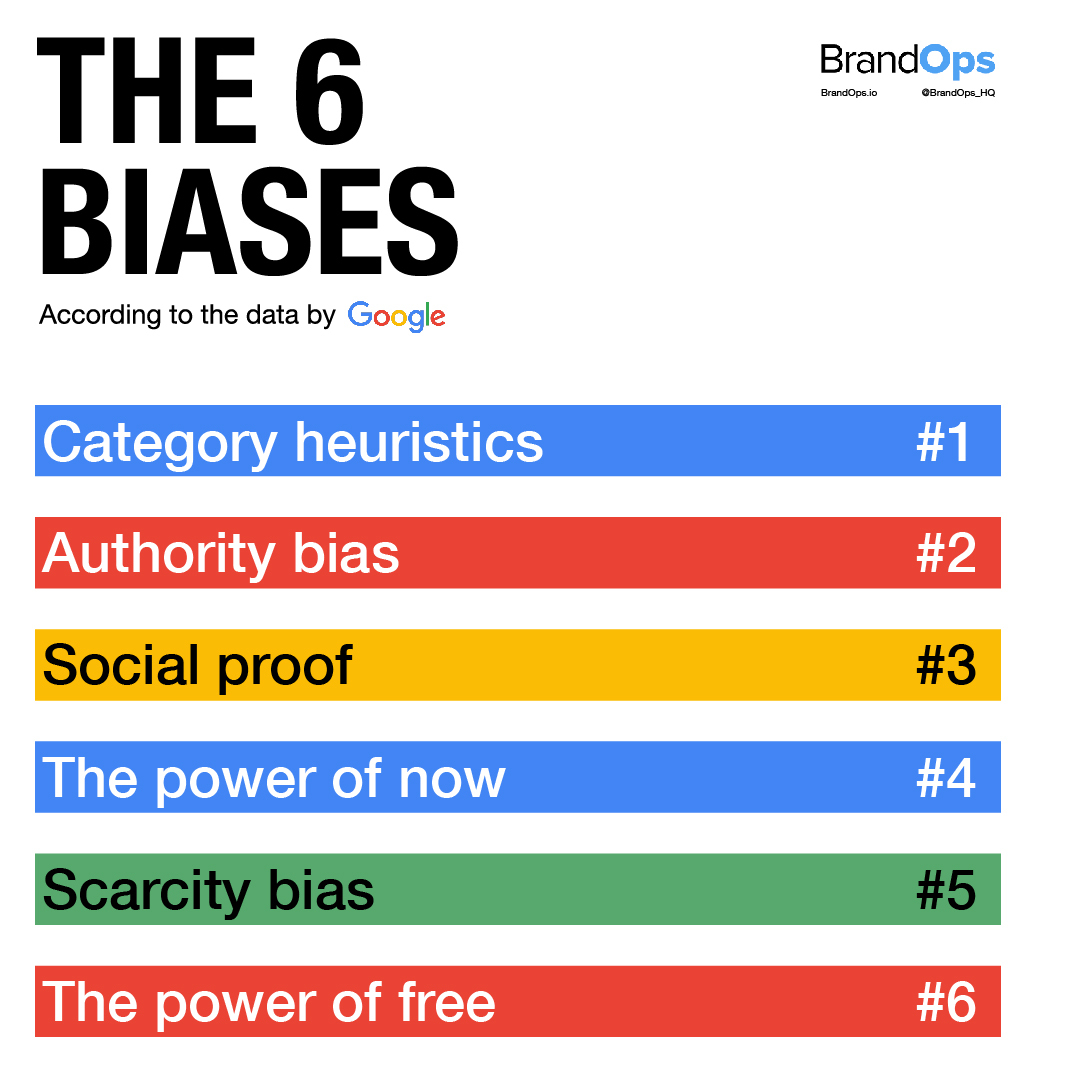Behavioral Bias in the B2B Journey
4 minute read
Google introduced The Messy Middle to highlight the significance of behavioral bias on brand preference. Their study demonstrated that if customers received specific stimulus, customers would switch from their preferred brands to another brand up to 87% of the time. For anyone working on brand loyalty, this analysis delivers a gut-punch. But the news isn’t all bad, especially for high involvement / high consideration brands.
The Messy Middle of B2C
The Messy Middle research was a large-scale shopping experiment with in-market shoppers simulating 310,000 purchase scenarios across multiple industries. The shoppers were asked to pick their first and second favorite brands within a category, and then a set of behavioral triggers were applied to see if people would switch brands. The results were rousing. Customers switched to the challenger brand at least 28% of the time, and up to 87%, depending on the category. The shoppers switched to another brand when it was “supercharged” with benefits, including rave reviews and price discounts.
The experiment demonstrated that applying the appropriate behavioral triggers are essential to keep or capture a brand preference. The six areas that in the study included:
-
Category heuristics: Short descriptions of key product specifications can simplify purchase decisions.
-
Power of now: The longer you have to wait for a product, the weaker the proposition becomes.
-
Social proof: Recommendations and reviews from others can be very persuasive.
-
Scarcity bias: As stock or availability of a product decreases, the more desirable it becomes.
-
Authority bias: Being swayed by an expert or trusted source.
-
Power of free: A free gift with a purchase, even if unrelated, can be a powerful motivator.
Behavioral Biases that Affect B2B Offerings
This research demonstrates that humans are susceptible to persuasion tactics but the effectiveness of the tactics varies with the complexity of the offering. Although Google’s research focused on B2C, the same principle holds true for B2B - but here, the biases are different. At BrandOps, we witness higher degrees of success with brands that use behavioral biases in the purchasing journey. Here’s a valuable checklist for your reference!
The B2B Behavioral Bias Checklist
Category Messaging refers to using terminology or visual signals that make it easy for a buyer to know what kind of offering you have. For example, if you're a payment processor, your copy would use words like, ‘payment gateway’, ‘merchant account’ or ‘pay online’. By using specific keywords, you indicate to your buyers which industry or category that you serve. This might sound obvious, but many marketers try to get fancy with their messaging and lose the audience before they have an opportunity to inform them. Category messaging welcomes a shopper to your offering by using friendly, familiar terminology.
Authority Bias is when an authority figure tells us what we should do - and we believe them because, well - they’re the expert! Buyers lack the time to investigate the multitude of options and rely on 3rd party specialists to find shortcuts for us. In B2B, authorities are often industry analysts, keynote speakers, or popular journalists.
Social Proof is used to indicate popularity and acceptance. Most people don’t want to be the lone buyer of something. They get comfort in knowing that other smart people are making a similar choice. By seeing customer quotes, recommendations from colleagues or reviews from complete strangers, buyers feel more confident in a purchasing decision.
 Satisficing on Competitive Alternatives refers to when a shopper feels that they have performed enough searching for alternatives. Perhaps counterintuitively, it is to the benefit of the seller to help the buyer to become aware of alternatives purely to expedite their evaluation process. Some companies do this by referring to industry reports that name competitors, while others rely on review sites. If the category is so new that 3rd party references aren’t available, it’s now acceptable to name your competitors in a “Us vs. Them” section in the website.
Satisficing on Competitive Alternatives refers to when a shopper feels that they have performed enough searching for alternatives. Perhaps counterintuitively, it is to the benefit of the seller to help the buyer to become aware of alternatives purely to expedite their evaluation process. Some companies do this by referring to industry reports that name competitors, while others rely on review sites. If the category is so new that 3rd party references aren’t available, it’s now acceptable to name your competitors in a “Us vs. Them” section in the website.
Post-Purchase Dissonance is just a fancy term for having anxiety about something you bought. Did you spend too much? Or buy from the right brand? It’s common for complex B2B solutions to offer some type of evaluation period, money back guarantee or warranty. These offers are incredibly important to encouraging a buyer to move forward with a vendor that they lack familiarity with.
 Proof of Community refers to a company's commitment to the category or industry as a positive contributor to the community. Companies demonstrate their commitment by attending trade shows, forming alliances, sponsoring events, writing topical articles or books, participating in each other's webinars or podcasts. These activities show that a company is spending time to understand how the community is evolving and gaining knowledge as to how they can play their part.
Proof of Community refers to a company's commitment to the category or industry as a positive contributor to the community. Companies demonstrate their commitment by attending trade shows, forming alliances, sponsoring events, writing topical articles or books, participating in each other's webinars or podcasts. These activities show that a company is spending time to understand how the community is evolving and gaining knowledge as to how they can play their part.
Personal Brand Associations take place when a buyer attaches their personal brand to the brand they’re purchasing. Buyers are humans - and they want wins in their personal life. The wins can be in the shape of a promotion at work, recognition for completing a task - or maybe something that just looks good on their resume. Savvy B2B marketers demonstrate how their solution is valuable to BOTH the business that they’re selling to and, to the individual doing the buying.
Convenient Engagement refers to the use of tools, technologies and practices that are convenient and often edgy. Customers hate when you present unnecessary purchasing obstacles. Worse - they believe that if they face hurdles while purchasing, they’ll likely face even greater obstacles when they use your products or interact with your support team. By reducing friction in the buying cycle, you reinforce the belief that your company and solution will also reduce friction.
The Takeaway
The results of the Messy Middle study were stunning. We can transfer the lessons of the study to B2B, but in doing so we must rethink what the appropriate biases are. In addition, we have to consider where and when the triggers would occur. Great brands use these techniques to drive buyers deeper into the funnel and increase conversion rate. Use our handy checklist to perform a quick audit on how your group uses behavioral biases in the purchase path.
The conversation is never over - there’s always more to be learned. For all the fans out there - give us a holler and help us improve the model. Are there more B2B purchase biases we should be analyzing? We’re happy to update as we learn together!
Next up, we’ll be discussing how to accumulate behavioral triggers in the branded journey.



